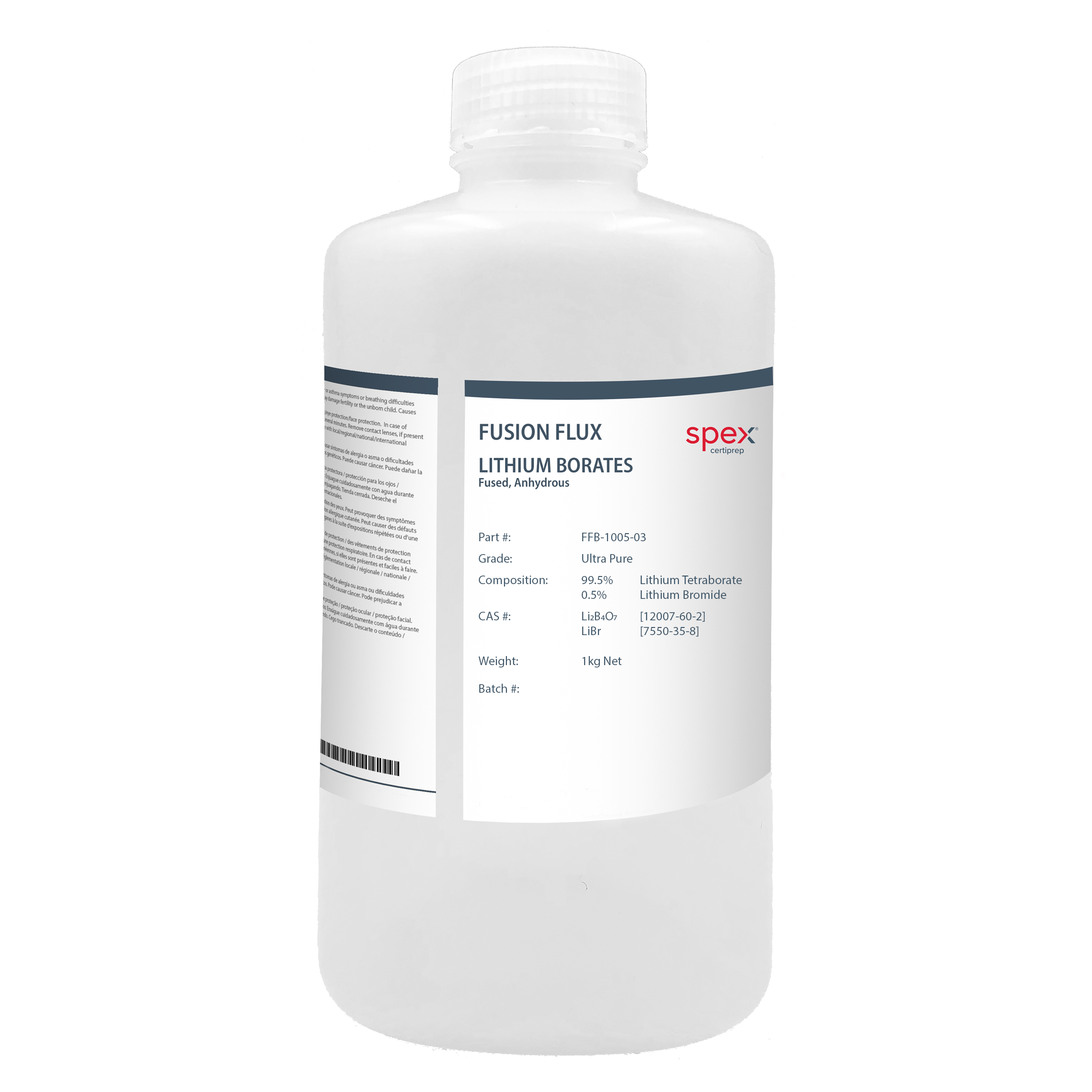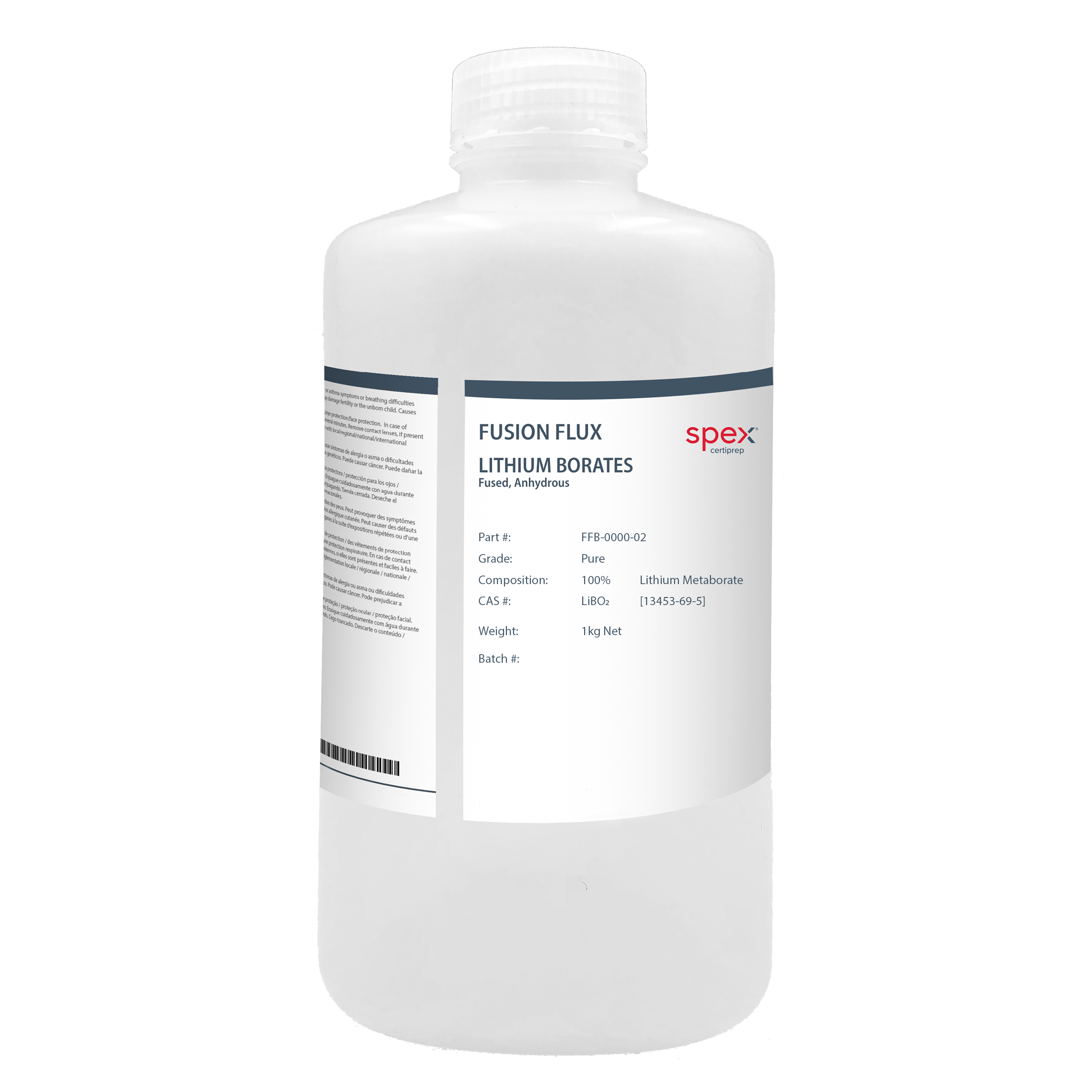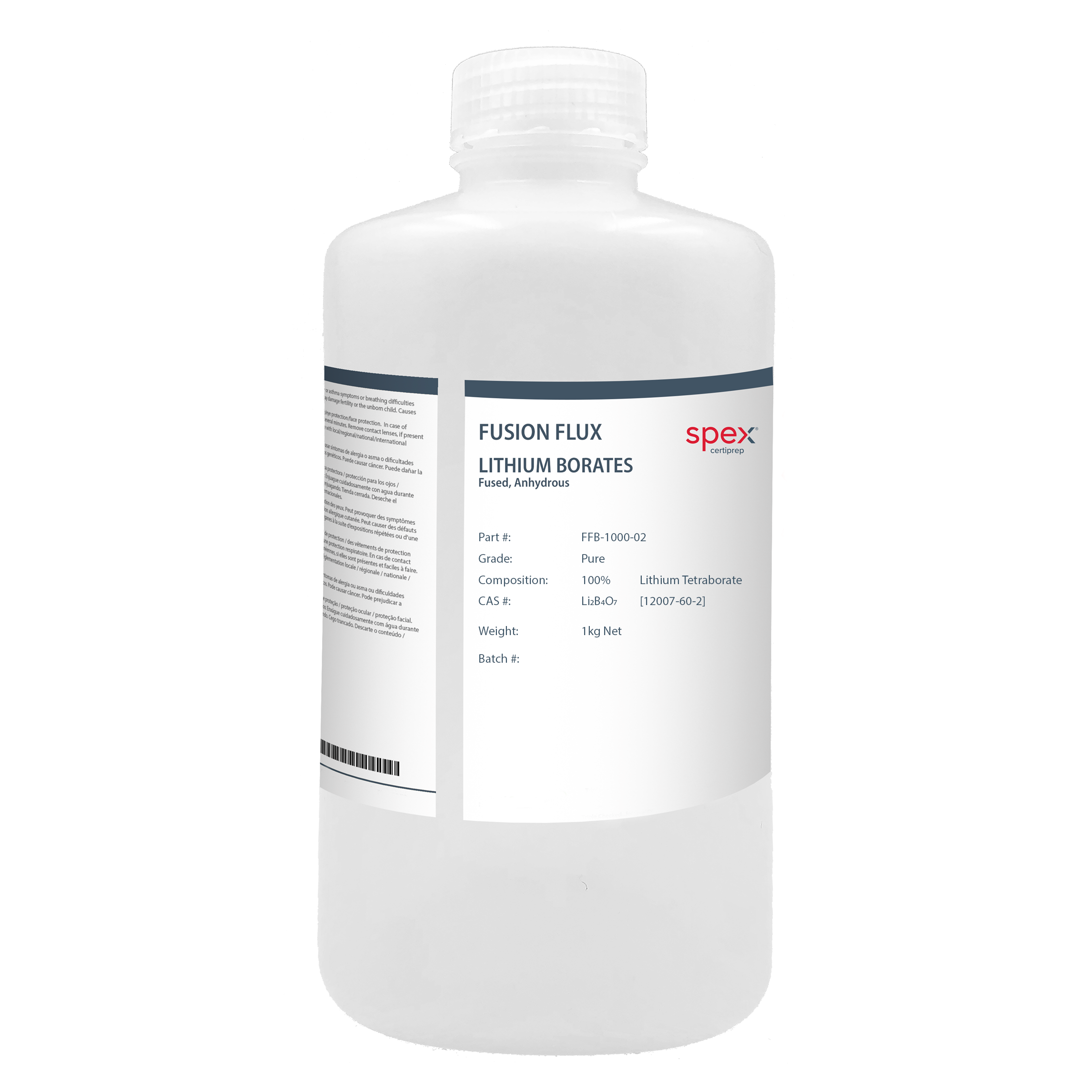Fusion is a technique used to prepare inorganic samples, with a view to analyze them by X-ray fluorescence (XRF), inductively coupled plasma (ICP), atomic absorption (AA), or any traditional wet chemistry method. Typical samples include cement, ores, slag, sediment, soils, rocks, ceramics, pigments, glasses, and metals. A fusion can produce either a small, homogeneous glass disk (or ‘bead’) for XRF, or an acid solution for other analytical methods. Fusion is an extremely effective method of preparation for oxides, sulfides, fluorides, ferroalloys, and other compounds for analysis by XRF, AA, ICP, DCP, etc. The samples are, if necessary, pulverized and mixed with a flux. This mixture is heated until the flux melts and the sample dissolves in it, yielding a clear, homogeneous melt. The melt can be cast as a glass disk for XRF or dissolved in dilute acids for analysis in solution form. In many cases, fusion fluxing is simpler and the analytical results more accurate than if the sample was prepared by conventional acid dissolution or pressed powder methods.
We offer pure and ultra-pure fusion fluxes and additives. Both lines are of a high purity, with the ultra-pure line having a purity of 99.998%. These fluxes are made from a ‘micro bead’ formula that ensures the same ratio of components in each bead with no harmful dust to clog your instruments. Our highly standardized manufacturing process produces identical batches with no appreciable lot to lot variations, thus maintaining a high level of consistency and quality.
Fusion Fluxes and Additives Brochure
Looking for a fusion flux blend we don't have in stock? Contact us at
[email protected] with your request.




